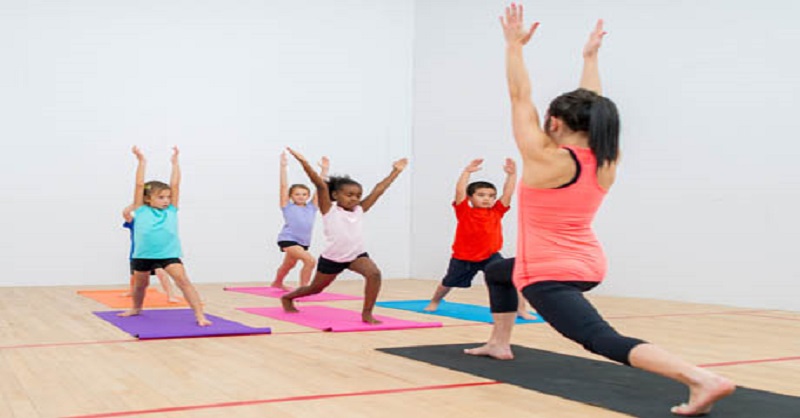
Try out this simple yoga pose that helps relax your face muscles and diaphragm.
Lion Pose
Blow off some steam, wake up your face, and lighten up your practice in silly Simhasana.
(sim-HAHS-anna)
simha = lion
Lion Pose: Step-by-Step Instructions

Step 1
Kneel on the floor and cross the front of the right ankle over the back of the left. The feet will point out to the sides. Sit back so the perineum snuggles down onto the on the top (right) heel.
Step 2
Press your palms firmly against your knees. Fan the palms and splay your fingers like the sharpened claws of a large feline.
Step 3
Take a deep inhalation through the nose. Then simultaneously open your mouth wide and stretch your tongue out, curling its tip down toward the chin, open your eyes wide, contract the muscles on the front of your throat, and exhale the breath slowly out through your mouth with a distinct “ha” sound. The breath should pass over the back of the throat.
Step 4
Some texts instruct us to set our gaze (drishti) at the spot between the eyebrows. This is called “mid-brow gazing” (bhru-madhya-drishti; bhru = the brow; madhya = middle).Other texts direct the eyes to the tip of the nose (nasa-agra-drishti; nasa = nose; agra = foremost point or part, i.e., tip).
Step 5
You can roar two or three times. Then change the cross of the legs and repeat for the same number of times.
https://www.eastcoastdaily.in/2018/01/03/yoga-can-find/
Pose Information
Sanskrit Name
Simhasana
Pose Level: 1
Contraindications and Cautions
If you have a knee injury, always be cautious in flexed-knee sitting positions and, if necessary, sit on a chair to do the pose.
Modifications and Props
If you find the leg position described above to be uncomfortable, simply sit in Virasana. Sit on a block positioned between your feet.
Deepen the Pose
Some old instructional manuals teach that Jalandhara Bandha should be performed during Simhasana.
Therapeutic Applications
According to several sources, Simhasana is a useful pose for people with bad breath or for those who stutter.
Preparatory Poses
Baddha Konasana
Dandasana
Siddhasana or Sukhasana
Supta Virasana
Supta Baddha Konasana
Virasana
Follow-up Poses
Simhasana is a good pose to use to “clear the air,” so to speak, at or near the beginning of an asana or pranayama practice. So almost any pose would be appropriate to practice next.
Beginner’s Tip
The hands and shoulder blades are sympathetically connected. As you spread the right palm on the right knee, feel how the shoulder blade spreads across your back. Similarly, as you press each palm against the same-side knee, feel how the same-side shoulder blade presses more deeply into the back, helping to lift the heart.
Benefits
Relieves tension in the chest and face.
An often-overlooked benefit of Simhasana is that it stimulates the platysma, a flat, thin, rectangular-shaped muscle on the front of the throat. The platysma, when contracted, pulls down on the corners of the mouth and wrinkles the skin of the neck.
Simhasana helps keep the platysma firm as we age.
According to traditional texts, Simhasana destroys disease and facilitates the three major bandhas (Mula, Jalandhara, Uddiyana).
Partnering
Nobody wants to partner with a lion.
Variations
Sit in what’s called Mandukasana (Frog Pose; manduka = frog). Kneel on the floor and sit back on your heels; then wiggle your buttocks down onto the inner arches of the feet, which together form a kind of saddle. Then, keeping the inner tips of your big toes touching, spread your knees wide, at least as wide as your outer hips. Now lean your torso forward and press your palms on the floor between your legs, fingers turned back toward your pelvis. Keep your elbows as straight as possible. Then perform the pose as described in Step 4 above.

Post Your Comments